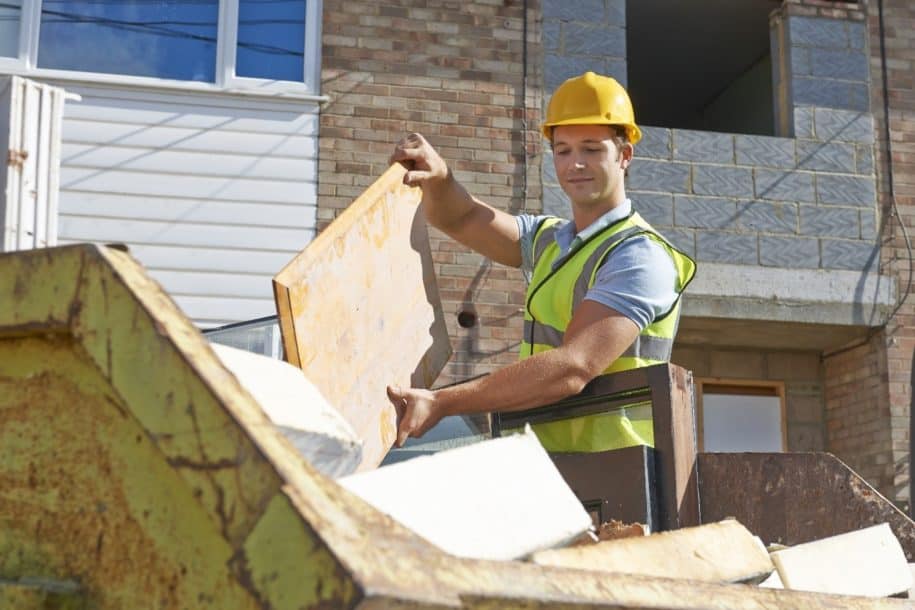Approximately half of all solid waste on the planet is discarded building materials resulting from construction. One-third of refuse in the US alone is categorized as “construction waste.”
A move towards sustainable development means stepping away from reliance on landfills for waste disposal. Landfills are quickly reaching capacity and pose a threat to global health and safety. Despite the many initiatives to reduce and recycle construction waste, a large percentage of (both hazardous and inert) materials are still currently planned for disposal in landfills.
What’s the waste that can happen?
The construction industry is a waste-intensive industry with a potential environmental impact at every step in the process – extracting raw materials, manufacturing, transportation, construction, and disposal of general and hazardous waste.
Inadequate planning (over-ordering products, damaging or mishandling materials, insufficient storage, or weather damage to materials) is the leading contributor to waste produced on-site. Construction sites also have the potential to generate hazardous wastes due to the use of certain chemicals, paint, and fuel that need to be responsibly disposed of at a hazardous waste facility. Hazardous substances should be stored in an impermeable area when not in use or disposed of. The kind of waste generated on a construction site will depend on the phase and type of project.
Plans for waste disposal must give way to waste management. It is increasingly imperative that construction waste be properly managed: eliminating waste where possible, minimizing waste production, and reusing materials. Established waste management practices attest that reduction, recycling, and reuse of waste are crucial in ensuring the sustainable management of resources. Here are six tips for construction companies to change gears from waste disposal to waste management:
1. Implementation
Having a comprehensive Waste Management Plan in place before construction commences will be beneficial in the long run. Taking preliminary calculations into consideration, such as accurately determining the number of materials that will be needed on-site, will reduce the overall waste generated.
A Waste Management Plan should include
- Potential sources of waste
- A site plan with designated areas for recycling, compost, and waste cages/bins
- Materials that can be recycled
2. Research Vendors
Selecting a vendor that can properly gauge the project’s needs is crucial. Quality vendors will provide waste containers and/or have the flexibility to remove recyclables and waste from the site as it is generated, to prevent waste build-up.
3. Recycling
Placing recycling bins around the site will reduce the amount of waste collected in waste skips/ cages. Materials that can be recycled include wood, metals, and concrete. There are specific processes involved when recycling, so additional research is required before incorporating this option into your waste management plan.
4. Reduce Packaging
Purchasing materials in bulk will reduce expenses and waste from individually packaged materials. The packing being recyclable should also be prioritized. Some packaging can even be reused on-site, for example, barrels and buckets being repurposed for storage.
5. Reuse Scraps
When possible, reuse scraps instead of cutting new materials. Scraps and offcuts should be properly stored until required. Subcontractors should also be informed of this necessity to save scraps and offcuts.
6. Organization
A well-ordered construction site will produce less waste. A detailed site plan with areas allocated for recycling, waste, and storage is essential. Clearly outlining the site will make it easier for workers to know where to go to dispose of different types of waste, increasing productivity and efficiency.
Effective engineers and contractors promote sustainable construction practices. A comprehensive Waste Management Plan is an economical investment for construction companies. Reusing and recycling materials on-site reduces final project expenses by:
- Adding tax benefits from donating recovered materials to charities.
- Decreasing transportation and packaging costs from reusing on-site materials, as opposed to shipping new materials from elsewhere.
- Offsetting production and overhead costs involved in extracting raw materials and storing surplus.
The decision to move towards less and better waste disposal is not just financially, but also environmentally responsible. The need for companies to contribute solutions to systemic problems is increasingly apparent as putting the onus on individuals has proved ineffectual. Reliance on landfills has a disastrous impact on the environment. Companies planning and following some of the tips listed above will make a big difference in managing waste on a construction site and reducing the amount of construction waste disposed to landfills.
Author Bio
The SafetyStratus Research Advisory Group (RAG) brings together thought leaders from the global environmental, health, and safety community to promote best practices and provide key insights in the profession and the industries they serve. The Research Advisory Group also advocates, where practical, the intersection of and advances with the use of technology, such as the SafetyStratus enterprise EHS software platform. Group membership consists of representatives from across varied disciplines and market sectors as well as select members of the SafetyStratus team.
The primary objectives of the SafetyStratus RAG partnership are to:
- Build a strategic partnership between EHS practitioners and the SafetyStratus team.
- Provide engaging and practical content to the global EHS community.
- Provide discipline and market feedback specific to SafetyStratus products and services.
While the objectives of the RAG are varied, the primary public-facing outcome will be available through engaging and practical content found on the SafetyStratus resource pages. Various articles, papers, and other valuable resources will be produced and shared as part of an ongoing effort to cultivate a robust community. Ultimately, the SafetyStratus RAG will expand to have a broader reach and provide opportunities for more inclusion by all interested EHS professionals in a collaborative community environment.



